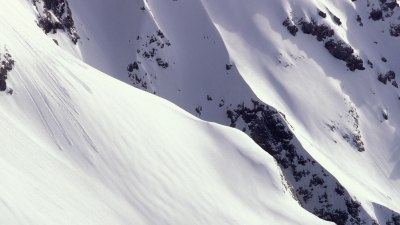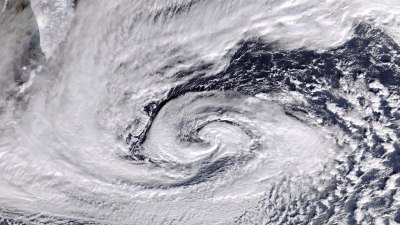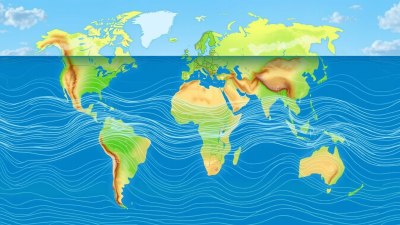The Physics Behind Snow Avalanches and How to Spot the Danger Signs
Explore the science of avalanches and learn to identify their danger signs for safer mountain adventures.

Avalanches are powerful natural phenomena that can pose life-threatening hazards to those in mountainous regions. Understanding the physics behind these events and recognizing the signs of potential danger are crucial for skiers, snowboarders, and mountain enthusiasts alike. In this article, we will delve into the intricate science of snow avalanches, examining the factors that trigger them and the signals that can help us predict their occurrence.
The Basics of Avalanches
An avalanche occurs when a mass of snow rapidly descends down a mountain slope, detached from the surrounding snowpack. This process is influenced by various factors such as snowpack structure, slope angle, and weather conditions. Essentially, avalanches can be categorized into two main types: loose snow avalanches and slab avalanches. Loose snow avalanches begin with an individual snow particle that loosens from the slope and creates a cascading effect, while slab avalanches involve a cohesive slab of snow that gives way and descends as a unit.
Physics of Snowpack Stability
The stability of a snowpack is a dynamic balance between the forces acting upon it. The primary forces include gravitational pull, which attempts to pull the snow mass downward, and the frictional forces that resist this movement. Understanding this balance requires a basic grasp of Newtonian physics. The stability of a snowpack can be influenced by several factors: the weight of the snow, temperature gradients, and the presence of weak layers.
Factors Contributing to Avalanche Formation
Several crucial factors contribute to the formation of avalanches. First, the accumulation of new snowfall adds weight to the existing snowpack. Heavy snowfalls, particularly over a period of time, can create instability. Second, temperature fluctuations can lead to melting and refreezing of the snow, forming ice layers that can create weak bonds within the snowpack. Lastly, wind can transport snow, creating drifts that are more likely to slide under certain conditions.
Types of Avalanches
As previously mentioned, avalanches can be classified into two primary types: loose snow and slab. However, within these classifications, there are several subtypes that are important to understand.
Loose Snow Avalanches
Loose snow avalanches, or point releases, are generally smaller and can appear relatively harmless. They start from a point on a slope and gather more snow as they descend. These avalanches are most likely to occur on steep slopes where loose snow is present. The danger lies in their ability to pick up speed and mass, often catching unsuspecting individuals off-guard.
Slab Avalanches
Slab avalanches are significantly more dangerous as they involve a larger volume of snow. These avalanches occur when a cohesive snow slab breaks free. Factors such as temperature changes, terrain features, and human activity can weaken the bonds holding the slab in place, leading to catastrophic releases. Slab avalanches can reach speeds of over 80 miles per hour and can carry with them trees, rocks, and other debris.
Identifying the Danger Signs
Being able to spot signs of potential avalanche danger is essential for safety in the backcountry. Here are some key indicators to watch for:
Recent Snowfall
A significant recent snowfall is one of the primary triggers for avalanches. If there has been a heavy snowstorm, it is important to remain aware of the conditions and watch for changes in slope stability.
Temperature Changes
Fluctuations in temperature can directly affect the stability of the snowpack. Rapid warming can cause melting, leading to destabilization of various layers within the snowpack.
Visible Cracking or Whumping Sounds
If you see cracks forming in the snow or hear whumping sounds while on a slope, it's a clear indicator that the snowpack is under stress and may slide.
Windblown Snow or Cornices
Wind can create unstable cornices and build-ups of snow on ridges. These wind-affected areas can be particularly prone to avalanches.
Previous Avalanches
The occurrence of previous avalanches can signal a greater risk, especially in the same area where conditions are similar.
Staying Safe in Avalanche Terrain
Safety measures are crucial when navigating avalanche-prone areas. Here are tips to help you stay safe:
Check Avalanche Forecasts
Before heading into the backcountry, check local avalanche forecasts. These reports provide valuable information on current conditions and risk levels.
Practice Proper Education
Take an avalanche safety course to understand the risks and learn how to recognize the signs of avalanche danger more effectively. Certification courses offer training on how to read snow conditions and recognize dangerous scenarios.
Carry Safety Equipment
Always equip yourself with essential safety gear, including an avalanche transceiver, shovel, and probe. These tools are vital in case of an avalanche.
Travel with a Partner
Never venture into backcountry terrain alone. Always go with a partner or a group, allowing for better risk assessment and assistance in emergencies.
Evaluate Escape Routes
When planning your route, ensure you have a clear understanding of escape paths. Knowing where to go in the event of instability can save lives.
The Role of Technology in Avalanche Awareness
Advancements in technology have played a significant role in improving avalanche safety. Early-warning systems and remote sensing technologies provide essential data that can help predict avalanche-prone conditions. Scientist continue to study snow dynamics and use computer simulations to better understand and forecast avalanche behavior. Furthermore, developments in app-based technologies allow backcountry travelers to access real-time data and connect with other enthusiasts.
In conclusion, understanding the physics behind snow avalanches is crucial for anyone who ventures into mountainous terrain. By recognizing the danger signs and adopting safety practices, we can enjoy the beauty of the mountains while minimizing the risks associated with avalanches. Always prioritize safety and stay informed, as knowledge is the best defense against nature’s fury.











